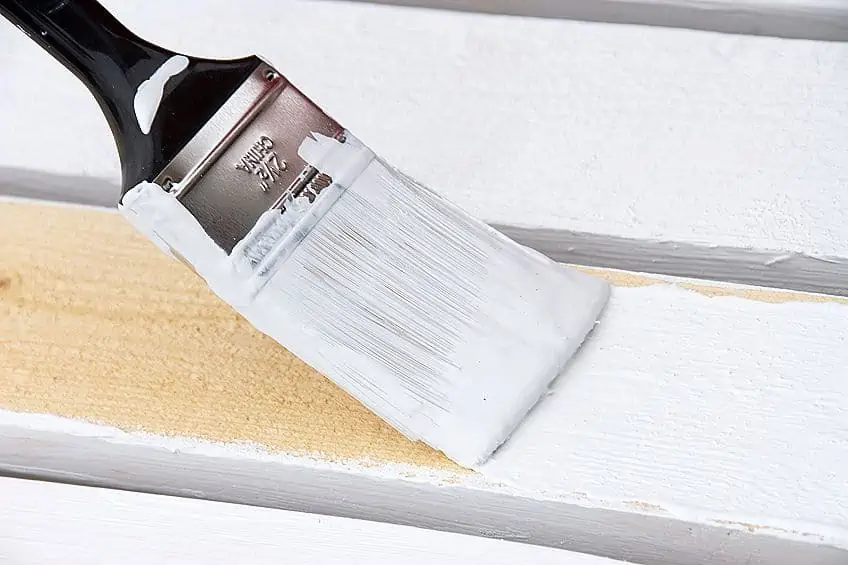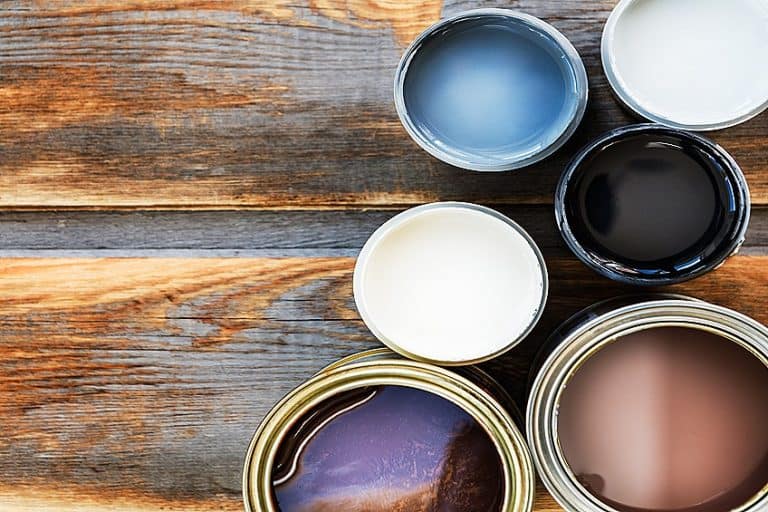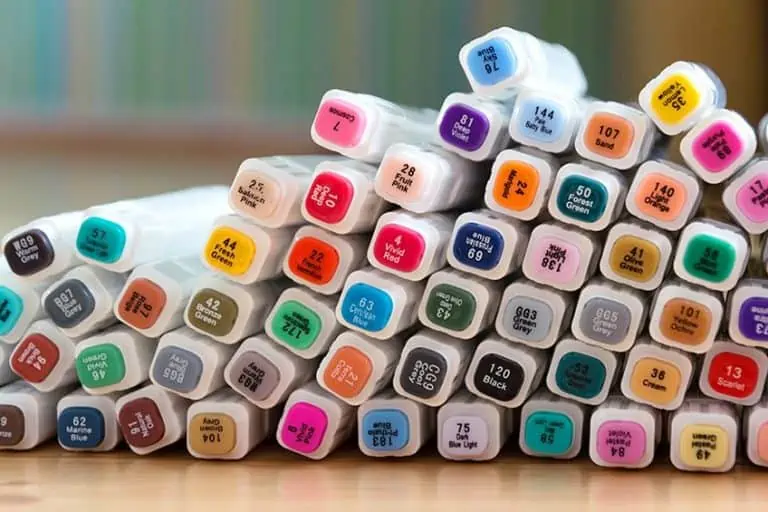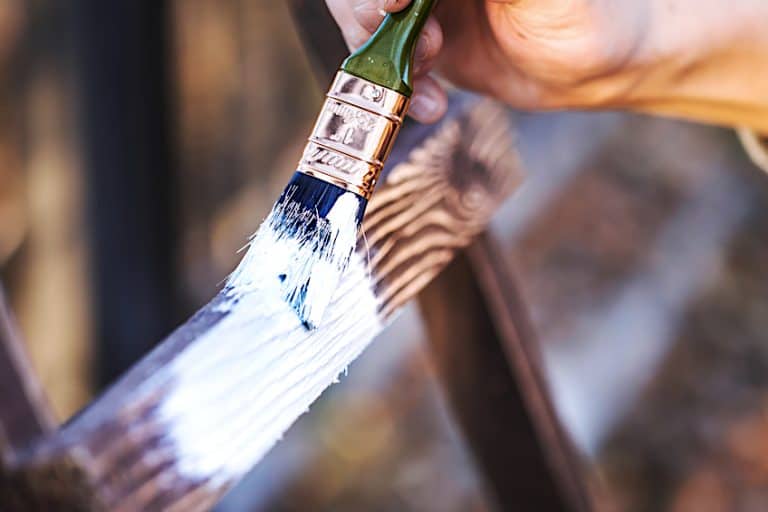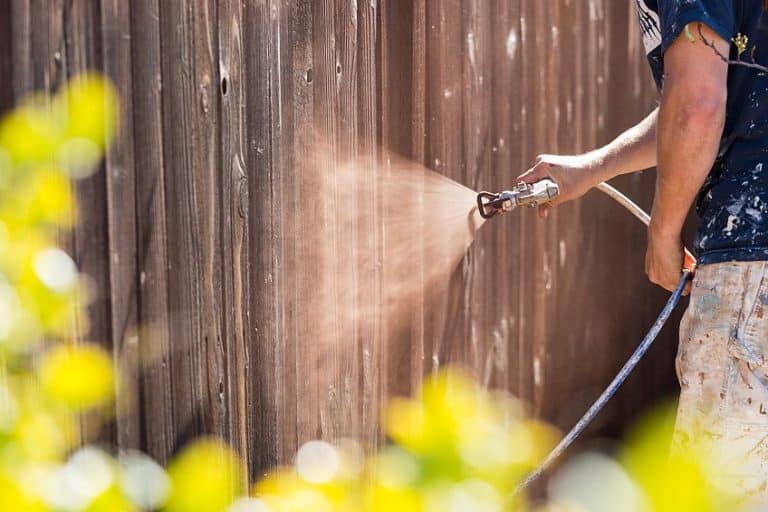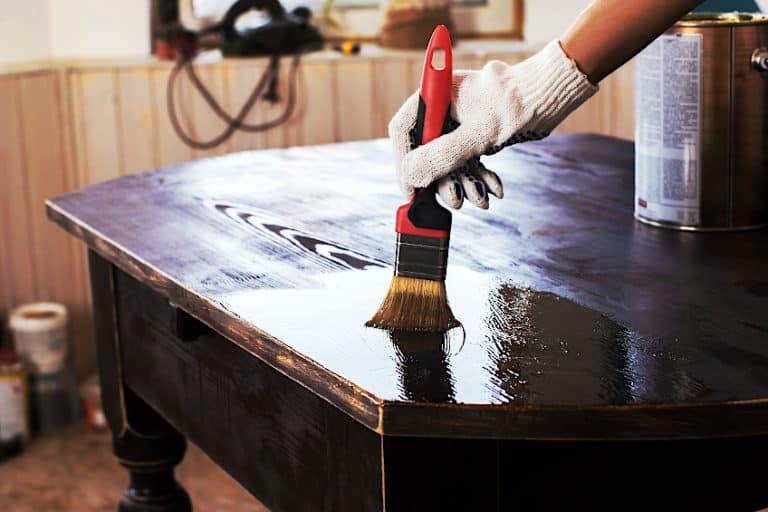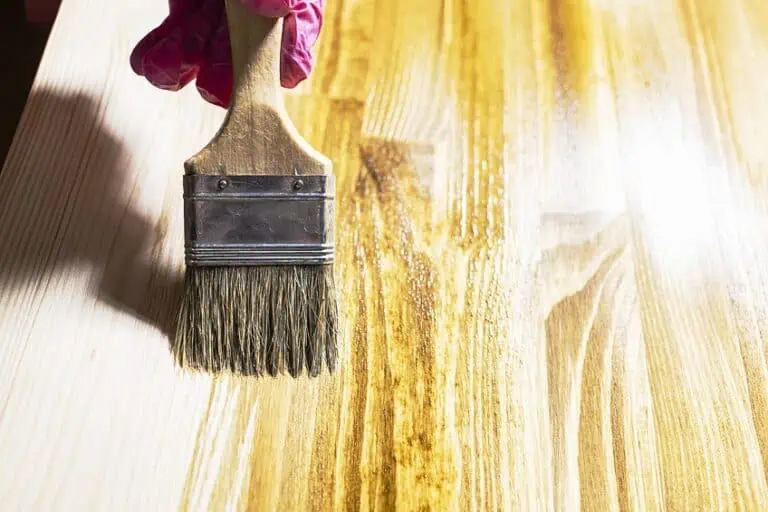Acrylic Paint on Wood – A Guide on Using Acrylics for Woodwork
Most people, when thinking about acrylic paints, may imagine something connected to canvas art. However, can you use acrylic paint on wood? Yes! Acrylic paints can be used on many types of surfaces including metal, fabrics, leather, paper, or any surface that does not have a gloss finish or oily surface. Acrylic paint on wood can be considered one of the best ways for painting on wood. This type of paint is easy to use and is an affordable option. To get the best results for acrylic paint on wood crafts, you do need to follow a few steps to increase the durability of your painted wood project.
Table of Contents
Does Acrylic Paint Work on Wood?
Water-based acrylic paint is made up of pigments that are distributed throughout an acrylic polymer emulsion. Acrylic paint is, therefore, non-toxic, will dry quickly, and can easily be cleaned up using some water and soap. This type of paint can be used on a variety of different woods.
For all these reasons, acrylic paint is a popular choice for many acrylic paint on wood crafts. Not only is it easy to use, but you can purchase the paints almost anywhere. Since it is non-toxic, it is a great choice when it comes to working inside. For the best results when using acrylic paints, it is recommended that you first prime your wood surface.
There are many wood paint projects that you can try, from beautiful and unique wood art pieces to painting more functional wood pieces such as wooden trays or adding a bit of color to wooden furniture.
Wood is also affordable – more so than canvas – and provides a firmer surface that should help to prevent any cracking while drying. Properly preparing the wood surface will give you a perfectly smooth surface on which to apply the acrylic paints.
However, wood can be a lot heavier when compared to canvas and, if not prepared correctly or left unprimed or unsealed, may cause discoloration and shorten the life of the wood piece. Framing of wood pieces can also be difficult, and if done incorrectly, could cause problems like warping. Hanging the wood may also be slightly more difficult to do than a canvas piece. But this should not stop you from creating your acrylic-paint-on-wood project, as there are so many ideas out there for you to choose from!
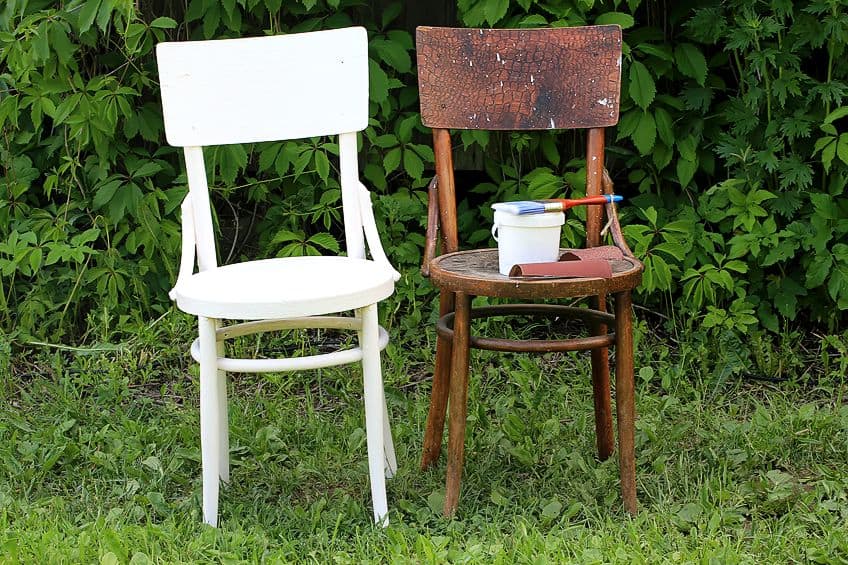
Which type of Acrylic Paint works for Woodwork
Acrylic paint for woodwork comes in two main forms: student-quality and artist-quality paints. The student-quality acrylic paints are usually cheaper because they have fewer pigment levels. There is also less of a selection when it comes to colors and they sometimes have fillers, which ultimately will affect the strength of the color being used.
Artist-grade acrylic paints are of better quality and come in many different colors. The high amounts of pigment present also give you a better and more vivid color. The texture is also smoother, allowing for more effortless blending and layering. Here are some suggested products for painting on wood.
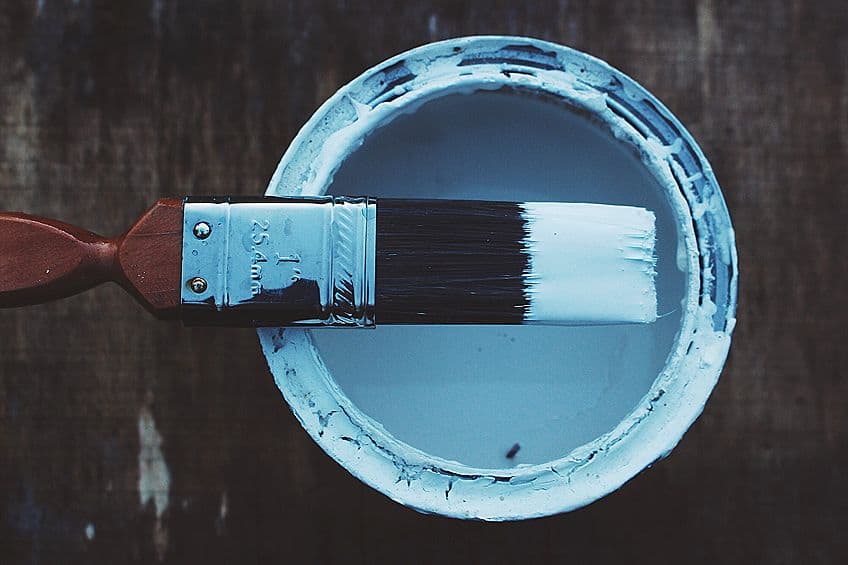
Preparation for Painting on Wood
Acrylic paint on wood crafts are fun and relatively easy, so that they can be achieved by anyone. In most craft stores you should be able to find wood blanks. Can you paint wood with acrylic paint? Yes, however, you might want to consider following a few steps to get a more durable item.
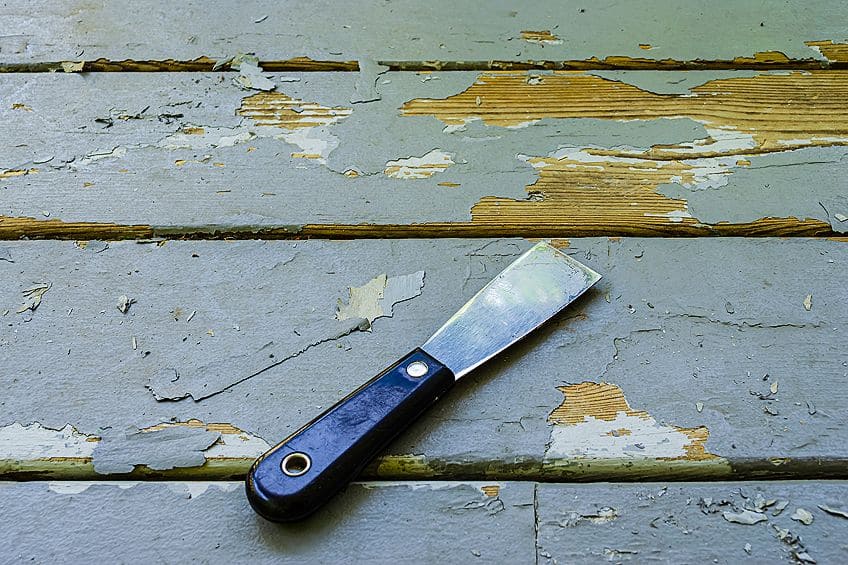
Sanding Before Painting on Wood
When sanding your wood surface, use fine-grit sandpaper (140- to 180-grit). Once done, wipe off any dust. Whenever you are sanding wood, it is always best to work in the direction of the wood grain. This is because if you sand across the grain, the sandpaper may scratch the surface, making it more visible than if you go with the grain. Any scratches made are concealed by the wood grain.
You might be able to purchase a wood piece that has already been sanded. If your wood surface is totally smooth, you will not have to sand it down.
When wiping away the dust, you should be using a tack rag or cloth. These are specially made cloths that help to remove dust and dirt, and can usually be found close to the sandpaper products in store. Otherwise, simply use a damp cloth to wipe away the dust, ensuring that you do not wet the wood too much. Even if you are not going to sand the wood piece, it is recommended that you wipe it down, as the surface could be dirty, and this will affect how the primer adheres to the surface.
Applying a Primer Before Painting on Wood
You do not always have to prime the wood, but doing so helps to seal the surface, provide a better surface onto which the paint can adhere, and can also help with the brightness of the paint color. The color will stand out more, especially if the wood item is a dark color.
You can use a primer that you brush, roll, or spray on, where Gesso seems to be a popular choice when it comes to acrylic paints. Apply the primer in a thin layer and allow this to dry. To achieve a better finish, you can apply more layers. Lightly sand the first layer and clean the surface, applying more primer and add as many coats as needed. Finally, allow the primer to dry completely overnight.
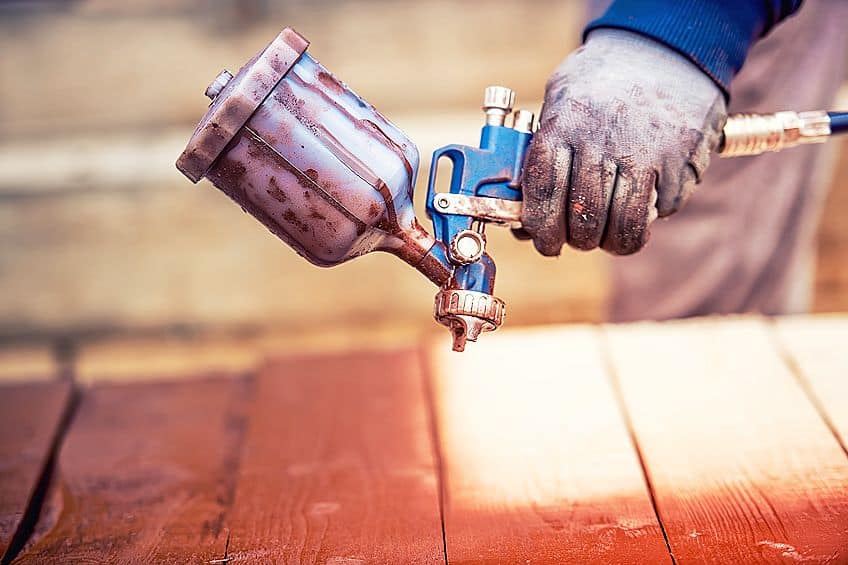
Painting on Wood
Does acrylic paint work on wood? Yes, most definitely. But there are a few other points to consider when applying acrylic paint on wood.
- Firstly, choose a quality brush and do not simply buy the cheapest one. The better-quality brushes will last longer if you look after them, and you will therefore not have any annoying brush hairs in your paint. Soft natural brushes are a good choice, as they will not leave behind noticeable brush strokes. Good quality paints are also something to look out for.
- You can begin painting on wood when the primer is dry. When dipping the brush into the paint, only go to about the middle of the brush and not up to the ferrule. Simply reach for more paint if needed. If you do get too much paint, this can make it more difficult to apply properly. For bigger surfaces, you can use a larger brush or you can use a roller instead.
- Once you are done painting, you might want to add a layer of sealant for your acrylic paint. You do not have to apply a sealant, but it will protect your wood piece and enhance its longevity. The sealant will help to prevent scratches and the paint from peeling. It will also be easier to wipe and keep clean from dirt.
- Smaller arts-and-crafts projects can be sealed with mod podge. You can also use other brush-on sealers or a clear acrylic spray sealant. If your wood item is going to be outside, you can also use varnish. Put on a couple of thin layers of varnish, remembering to let each layer dry before adding another layer or coat.
Can You Use Acrylic Paint on Wood That Has Been Stained?
Yes, but a successful job will depend on some factors. These include:
- The condition of the wood,
- The type of stain, and
- What wood item is going to be painted.
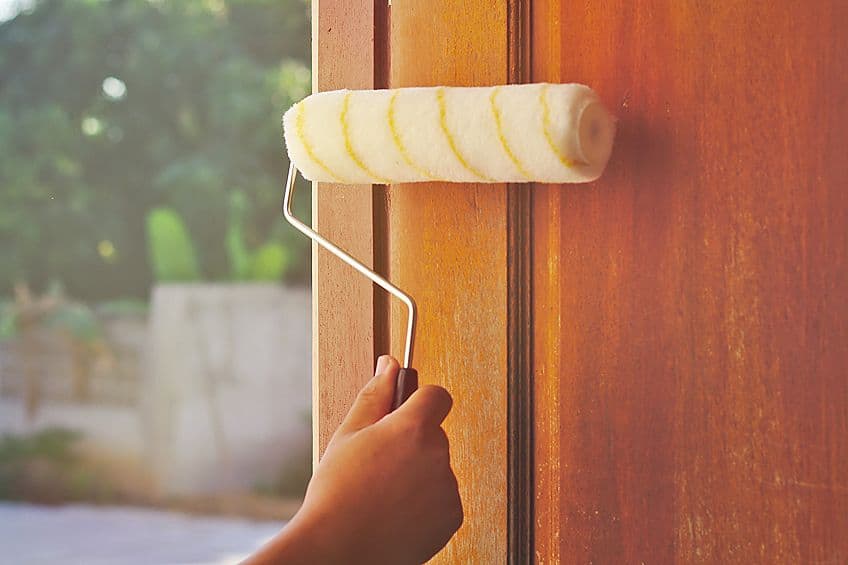
The same process is followed as above: preparing the wood, sanding, and then cleaning it. How much sanding is required will be determined by the wood item’s condition. Some stains provide a gloss finish, so sanding is important if you want the paint to adhere to the surface properly. If the stain does not have a smooth finish, sanding may only be needed to smooth out rough areas.
Apply a primer. This is an especially good idea if it is a dark stain. The primer provides a better base to work from when it comes to the paint color, as a dark stain will affect the final paint shade.
If you are not certain as to what primer to choose, do not be afraid to ask a store paint professional. Remember to tell them what type of stain it is and what paint you are looking to use.
Once you have applied multiple primer coats and allowed this to dry thoroughly, you can begin painting. When you have finished applying the paint, let this dry properly for about 12 to 24 hours to make sure that every area is dry. The paint should not feel tacky if you touch it.
Acrylic Paint on Wood Furniture
Acrylic paint on wood furniture can be done, but preparing the wood before painting is important. In most cases, wooden furniture will have some kind of topcoat, like varnish. This topcoat will prevent the paint from adhering to the surface, so removing it would be the first step. You can sand the wood using fine-grit sandpaper until the top layer is nearly gone.
Sand the entire wood surface properly, ensuring a nice and even surface. Clean and remove any dust by using a tack cloth or damp cloth, making sure that you do not wet the wood too much. Once the wood is dry, you can then apply the primer in multiple thin coats. Remember, each layer should be dry before you carry on. Once this is done, it is time to apply the acrylic paint on wood furniture. Finally, when the paint is dry, you can apply a sealer to safeguard the furniture further.
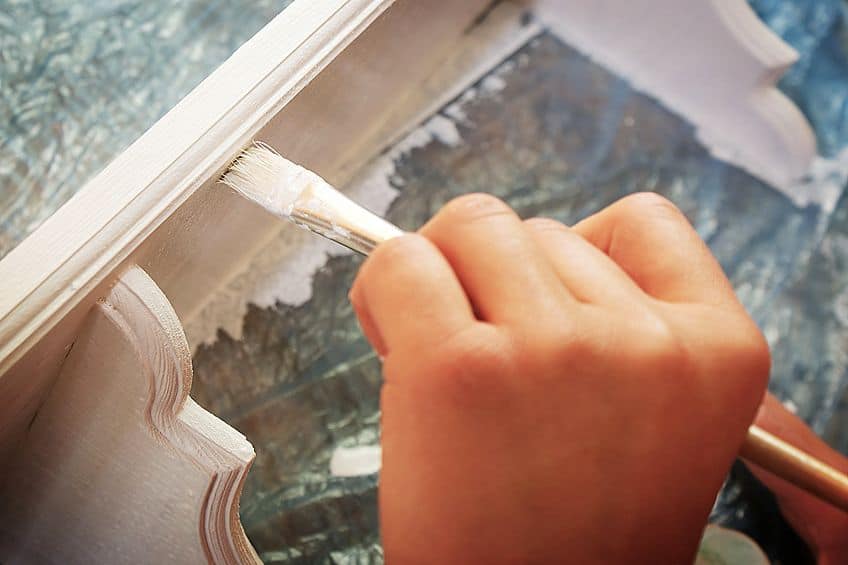
Frequently Asked Questions
Does it Take Long for Acrylic Paint to Dry?
Acrylic paint is quick-drying, so it should take around 20 to 30 minutes. However, the conditions and type of wood item you are painting can affect the time. To ensure that the paint has fully dried, leave it for 6 to 12 hours, and if it is a larger furniture item, 24 hours might be best.
Can You Paint Wood with Acrylic Paint?
Yes, it is possible if you prepare the wood surface properly. It is best to use superior-quality acrylic paints to get the results you want.
Is a Primer Necessary Before Using Acrylic Paint?
You can paint on wood that has not been primed. However, it is recommended that you prime the wood before applying the paint in order to enhance the longevity of the wood item.
Should I Use a Sealer for Acrylic Paint on Wood?
It is recommended that you apply a sealer for protection from scratches and to improve the wood item’s durability.
Can You Apply Acrylic Paint on Wood Furniture?
Yes, although most wooden furniture has been sealed with a top coat, which needs to be removed before you can paint. You will have to prepare the wood surface by sanding it down and applying a primer before applying the acrylic paint.

I have been into woodworking since 2005 and woodturning since 2011. Because of my love for wood and woodworking, I started woodhappen.com to teach other enthusiasts about how to finish and seal wood, the best woodworking tools, the different types of wood, and everything else related to woodworking! Read more about me here.

